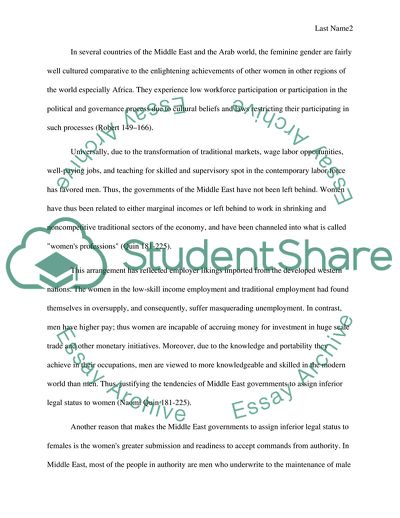Cite this document
(The Women's Legal Status in the Middle East Article Example | Topics and Well Written Essays - 2750 words, n.d.)
The Women's Legal Status in the Middle East Article Example | Topics and Well Written Essays - 2750 words. https://studentshare.org/politics/1852831-to-what-extent-did-the-feminist-growth-in-the-west-affect-the-womens-legal-status-in-the-middle-east
The Women's Legal Status in the Middle East Article Example | Topics and Well Written Essays - 2750 words. https://studentshare.org/politics/1852831-to-what-extent-did-the-feminist-growth-in-the-west-affect-the-womens-legal-status-in-the-middle-east
(The Women'S Legal Status in the Middle East Article Example | Topics and Well Written Essays - 2750 Words)
The Women'S Legal Status in the Middle East Article Example | Topics and Well Written Essays - 2750 Words. https://studentshare.org/politics/1852831-to-what-extent-did-the-feminist-growth-in-the-west-affect-the-womens-legal-status-in-the-middle-east.
The Women'S Legal Status in the Middle East Article Example | Topics and Well Written Essays - 2750 Words. https://studentshare.org/politics/1852831-to-what-extent-did-the-feminist-growth-in-the-west-affect-the-womens-legal-status-in-the-middle-east.
“The Women'S Legal Status in the Middle East Article Example | Topics and Well Written Essays - 2750 Words”. https://studentshare.org/politics/1852831-to-what-extent-did-the-feminist-growth-in-the-west-affect-the-womens-legal-status-in-the-middle-east.


